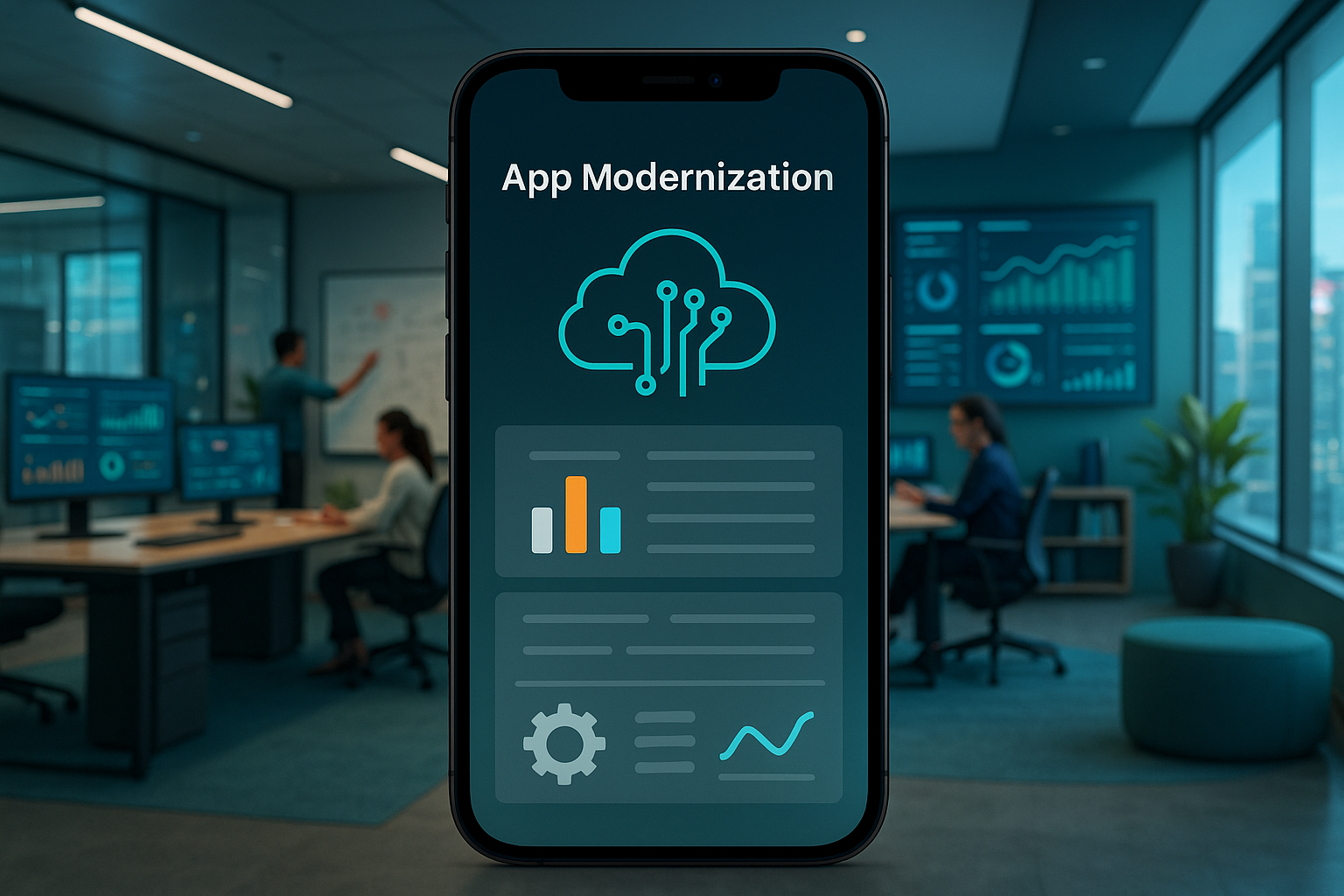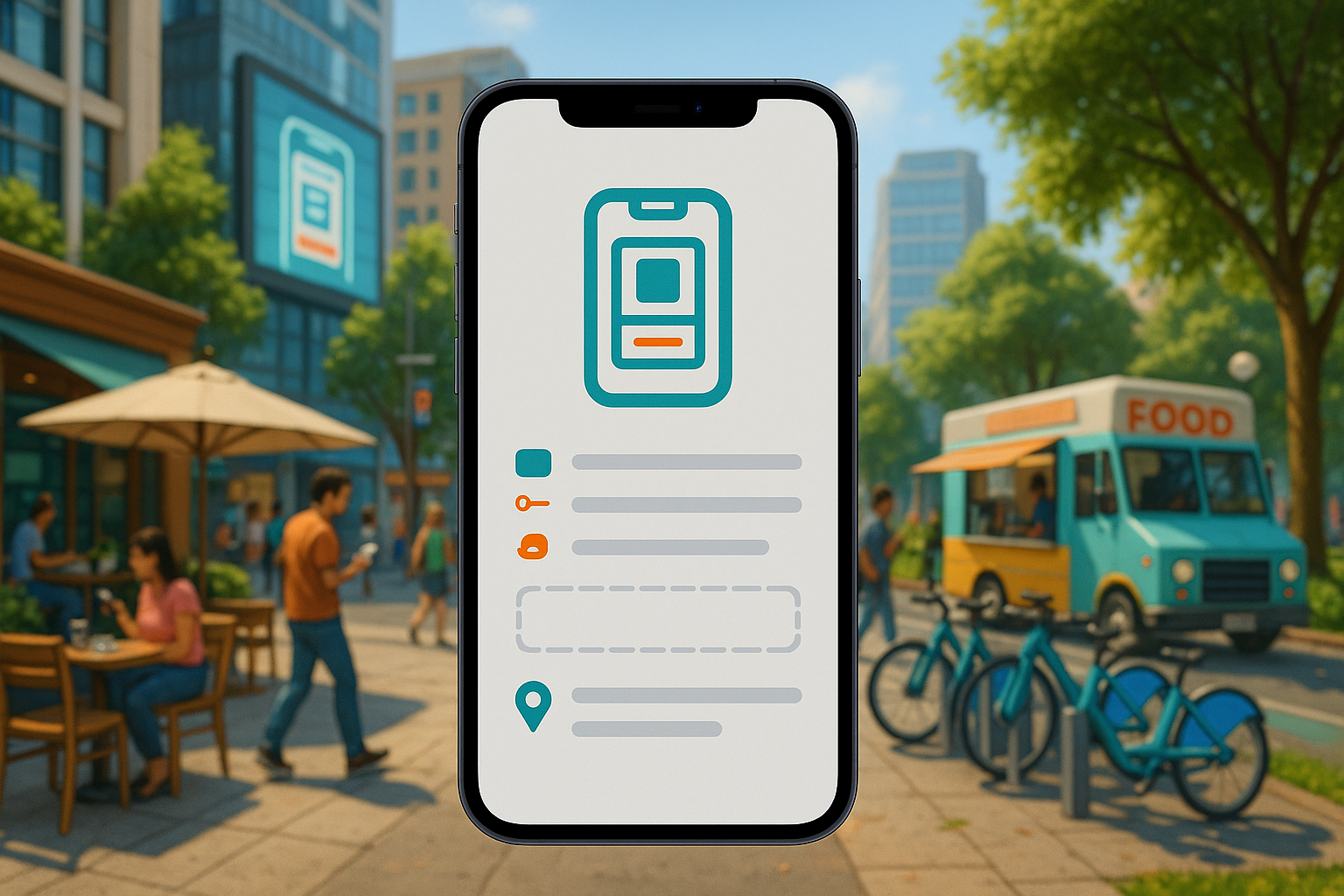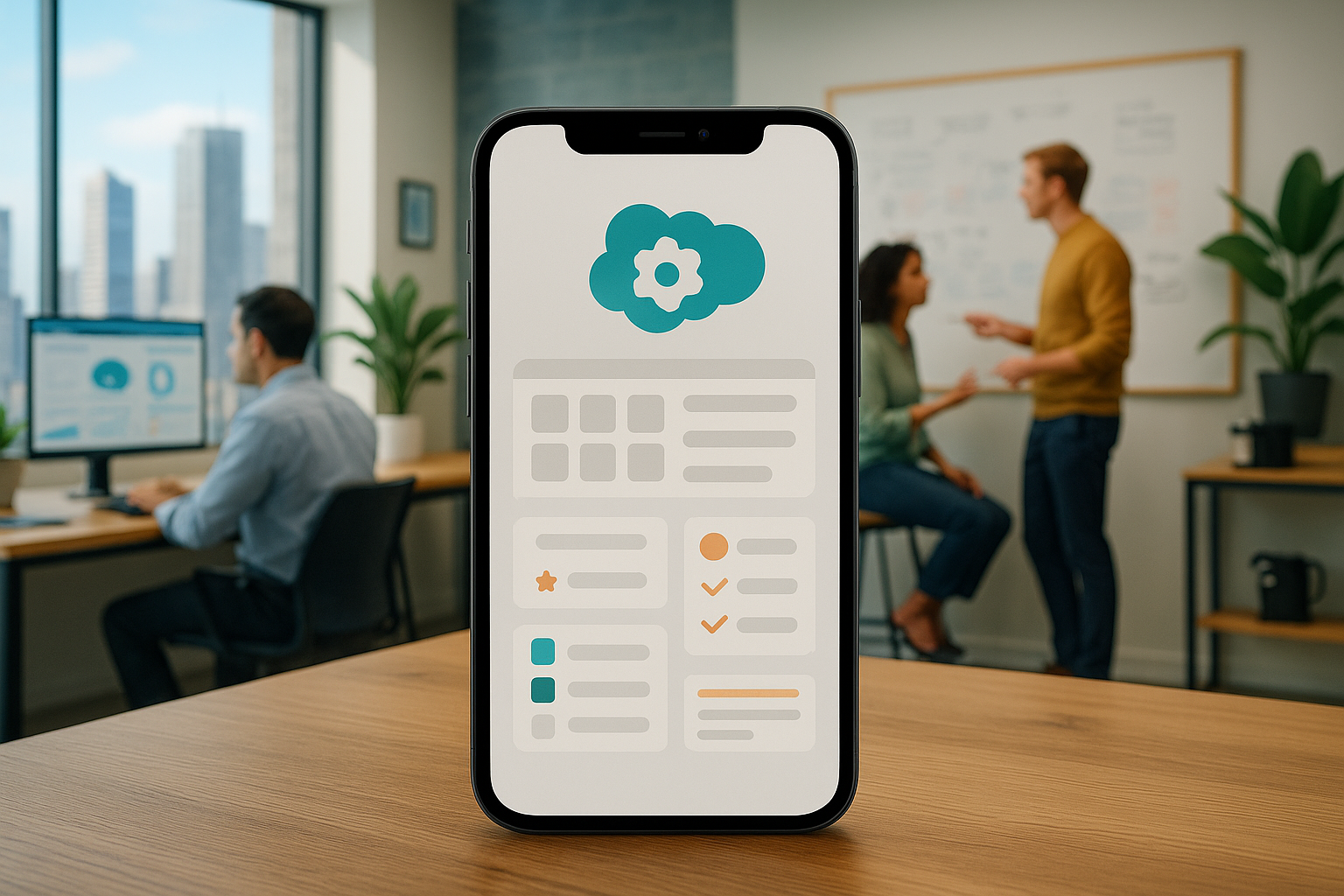Introduction: Navigating the Complexities of Application Modernization
In today’s fast-paced digital landscape, speed and agility are not just advantages; they are necessities for survival. Yet, many established organizations find themselves tethered to outdated, monolithic legacy applications. These systems, often built on-premises using dated development methods, can become a significant bottleneck, slowing down innovation, hindering scalability, and making it difficult to meet evolving customer expectations. The challenge of breaking free from this technical debt is immense, but the rewards of doing so are transformative.
This is where application modernization comes in. It is the crucial process of transforming these legacy systems into modern, cloud-native applications, often built on flexible microservices architecture. This journey allows businesses to improve the speed of new feature delivery, scale performance on demand, and unlock new value from existing data and functionality. However, the path is fraught with challenges, from staggering complexity and cost to significant security and integration hurdles.
This article serves as a comprehensive guide to the world of application modernization. We will explore what the process entails, why it can be so difficult to execute in-house, the various strategies you can employ, and the potential costs involved. We will also introduce the top service providers who can guide you on this journey. As a leading US AI-powered app development firm, we at MetaCTO specialize in helping businesses navigate this complex terrain. We don’t just modernize backend systems; we excel at integrating these powerful new architectures into seamless, high-performing mobile applications, turning legacy constraints into competitive advantages.
What is Application Modernization?
At its core, application modernization is the process of taking existing legacy applications and updating their platform infrastructure, internal architecture, and features. The primary goal is to move away from older, inflexible systems and embrace the advantages of modern technology stacks and development practices. While the term is broad, much of the discussion today centers on transforming monolithic, on-premises applications—those typically updated using slow, cumbersome waterfall development processes—into agile, cloud-based applications.
This transformation involves bringing these monolithic applications into the world of cloud architecture and modern release patterns, namely microservices and DevOps. Instead of a single, large, tightly-coupled codebase (a monolith), a modernized application is broken down into a collection of small, loosely coupled microservices. These components are smaller, can be deployed and scaled independently of one another, and communicate through well-defined APIs.
This architectural shift is a key enabler of the significant benefits that modernization delivers:
- Improved Velocity: By breaking an application into independent services, development teams can work on different features simultaneously and deploy updates without affecting the entire system. This dramatically improves the velocity of new feature delivery.
- Enhanced Accessibility via APIs: Modernization often involves exposing the functionality of existing applications to be consumed via API by other services. This allows new, cloud-native applications to leverage the capabilities and data of proven legacy systems.
- Scalability and Performance: Replatforming applications from on-premises servers to the cloud is a cornerstone of modernization. This move is critical for achieving the application scale and performance required to meet modern user demands.
- Strategic IT Alignment: Moving to the cloud is also a strategic decision that aligns with long-term data center and IT strategies, reducing reliance on physical hardware and optimizing operational costs.
To achieve these outcomes, modernization relies on a portfolio of powerful technologies. Public, private, hybrid, and multicloud strategies are all critically important for addressing security, latency, and architectural requirements. Furthermore, containers and Kubernetes have emerged as key enablers. Containerization allows an application and its dependencies to be packaged in a consistent, lightweight way, ensuring it can run reliably across any environment, whether a developer’s desktop, an on-premises server, or the cloud.
Reasons Application Modernization is Difficult to Do In-House
Embarking on an application modernization project is a formidable task, and attempting to manage it entirely with an in-house team presents a unique set of steep challenges. The data reveals a clear picture of the hurdles organizations face, which span organizational, technical, and resource-based issues.
According to a Red Hat report, the complexity of legacy systems is the single greatest organizational challenge, cited by 48% of organizations overall. This number skyrockets to 58% for organizations in the early stages of their modernization journey, highlighting how daunting the initial steps can be. These legacy systems are often poorly documented, built with outdated languages, and have intricate dependencies that are understood by only a few senior employees, if any.
Beyond the sheer complexity, organizations grapple with a host of other significant barriers:
- Determining the Right Approach: A staggering 41% of organizations struggle with simply figuring out the best way to start, a figure that jumps to 55% for those in the early stages. The array of strategies—from a simple “lift and shift” to a full rewrite—can be paralyzing without deep expertise.
- Competing Priorities: Modernization is a long-term strategic investment, but it often has to compete for resources with more immediate business needs. This is a challenge for 42% of organizations overall and is cited as a personal barrier by 44% of individuals involved in these projects.
- Security and Integration: On an individual level, the challenges become even more technical. A majority of individuals (56%) cite security concerns as a personal barrier. Modernizing an application means exposing it to new environments and connecting it with other services, which opens up new potential vulnerabilities that must be expertly managed. Integration challenges are a close second, with 47% of individuals struggling to make new and old systems work together harmoniously.
- Cost and Complexity: IBM notes that cost and complexity are universal challenges. Modernization projects can be expensive and require careful planning to manage scope and avoid budget overruns. The intricate nature of re-architecting systems demands a high level of technical skill and project management.
- Skills Gap: Successfully modernizing an application requires a modern skillset, including expertise in cloud platforms, containerization, microservices, and DevOps. Recognizing this, 40% of organizations state that additional training is needed to solve their modernization challenges.
When the goal is to modernize an application for a mobile-first world, these difficulties are magnified. The project is no longer just about refactoring a backend; it’s about creating a robust, low-latency, and secure bridge between a newly modernized cloud service and the native mobile applications running on users’ devices. This requires a rare blend of expertise in both cutting-edge backend architecture and specialized mobile development for iOS and Android. Finding this combination of skills within a single in-house team is exceptionally difficult.
This is precisely where a specialized development agency can provide immense value. As an experienced partner in AI and mobile app development, we offer the fractional CTO guidance and deep technical expertise needed to navigate these obstacles. We help you define the right strategy, manage complexity, and build a secure, scalable solution without having to hire a large, specialized in-house team.
Application Modernization Strategies and Approaches
There is no one-size-fits-all solution for application modernization. The right path depends entirely on an organization’s specific goals, resources, timeline, and the state of the application itself. An app modernization strategy is typically defined during the planning stage and is distinguished by the need for code changes. It’s often practical to approach modernization in stages, starting with simpler methods and moving on to more advanced techniques over time.
Many organizations begin their journey with a “lift and shift” migration, which allows them to see immediate, albeit basic, benefits of cloud computing before committing to more intensive efforts. From there, they can adopt more transformative strategies. Here are the most well-known approaches:
| Strategy | Description | Key Goal | Code Changes |
|---|---|---|---|
| Rehost | Also known as “lift-and-shift,” this involves moving an application as-is from an on-premises environment to the cloud. | Speed | Practically none |
| Replatform | This approach involves making some code changes to optimize an application for the cloud, such as leveraging containers or managed database services. | Cloud Optimization | Minimal |
| Refactor | Also called “repackaging,” this strategy involves minimal code changes to help an application connect to and leverage a cloud-first environment. | Productivity & Speed | Minimal to Moderate |
| Rearchitect | This involves modifying and extending an application’s code and functionality to better support cloud scalability and resilience. | Scalability | Significant |
| Rebuild | Also known as “rewriting,” this approach involves recreating an application from scratch using modern, cloud-native solutions. | Functionality | Complete Rewrite |
| Replace | This strategy involves retiring the existing application entirely and replacing it with a third-party, ready-made solution (SaaS). | Speed & Resource Savings | N/A (Adoption) |
| API-based | This approach leaves the application in place but securely exposes its functions or data via APIs for new applications to consume. | Integration | Minimal (API layer) |
A Closer Look at Key Strategies
-
Rehost (“Lift and Shift”): This is the fastest way to get to the cloud. By taking an application as-is and transitioning it to a new environment, organizations can quickly exit their on-premises data centers. It requires practically no code changes, making it an ideal first step.
-
Replatform: As a middle ground between rehosting and refactoring, replatforming involves making targeted code changes so that applications can better utilize cloud technologies. Value is often found here by restructuring the application to leverage containers and Kubernetes.
-
Refactor: This strategy prioritizes both speed and productivity. It involves making minimal changes to an application’s code so it can easily connect to a cloud environment. The most common pattern of modernization—breaking down a monolithic application into a collection of small, loosely coupled microservices—is a form of refactoring. A popular technique within this strategy is the “strangler pattern,” which involves gradually pulling out the easiest and most valuable parts of the monolith and replacing them with new services until nothing of the original monolith remains.
-
Rearchitect: When an organization needs significant cloud scalability or wants to add new capabilities, rearchitecting is often the right approach. It involves making substantial modifications to the application’s code and architecture to scale more effectively in the cloud.
-
Rebuild or Replace: If an existing application has a limited functional lifespan or will not meet future business needs even after modification, a more drastic approach is needed. Rebuilding is a heavy lift, as it means rewriting the app from scratch, but it may be essential for long-term viability. Alternatively, an organization can replace the app with a ready-made SaaS solution. This can be faster than rebuilding and free up development resources, but it may also introduce business process interruptions or limit future modernization initiatives.
-
API-based Modernization: In some cases, the best approach is to leave a legacy application in place while securely exposing its data or functions via APIs. This is a strategy based more heavily on integration than migration, and it allows new, cloud-native applications to take advantage of the capabilities of existing systems without the disruption of a full migration.
Estimating the Cost of an Application Modernization Project
One of the biggest challenges in any modernization initiative is accurately estimating the cost. Unlike building a new application from scratch, modernizing a legacy system involves a high degree of uncertainty, particularly in the early stages. The final cost is influenced by the chosen strategy, the complexity of the legacy system, and the composition of the development team.
Two primary factors heavily impact the net productivity and cost of a modernization project:
-
The Modernization Approach: The strategy you choose has the most direct impact on cost. As a rule, migrating existing code by reusing it is significantly easier and more cost-effective than rewriting it. A complete rewrite is an expensive way to migrate code, as it discards years of embedded business logic and requires a full development cycle. The strategies can be viewed on a cost spectrum:
- Low Cost: Rehosting (lift-and-shift) is typically the least expensive option as it involves minimal changes.
- Moderate Cost: Replatforming and refactoring involve more work but are generally less expensive than starting over. These approaches deliver a higher return on investment by enabling cloud-native features.
- High Cost: Rearchitecting and rebuilding are the most expensive and time-consuming options, essentially amounting to a full-scale development project.
-
Team Composition: The makeup of your development team has a profound effect on project efficiency. A project staffed with junior developers may have a lower hourly rate but will likely suffer from lower net productivity, leading to longer timelines and higher overall costs. Conversely, a team that includes “old-timers” who know the legacy language and application can be invaluable. Their deep knowledge can accelerate the process of understanding and untangling the old code, preventing costly mistakes and rework.
At MetaCTO, we understand that managing costs is paramount. Our approach to a project rescue or modernization often begins with a Rapid MVP Development phase. By focusing on modernizing the most critical components of your application first, we can deliver tangible business value in as little as 90 days. This iterative method allows you to test the results, gather feedback, and make informed decisions about the next phase of modernization, all while keeping initial costs contained and demonstrating a clear return on investment.
Top Application Modernization Development Companies
Choosing the right partner is arguably the most critical decision in a modernization journey. The best application modernization companies stand out for their deep technical expertise, proven success across various industries, and ability to deliver tailored strategies that align with business goals.
1. MetaCTO
As a premier AI-powered mobile app development agency in the U.S., we at MetaCTO bring a unique and vital perspective to application modernization. While many firms focus solely on backend infrastructure, our expertise lies in connecting modernized systems to elegant, high-performing, and profitable mobile applications. With over 20 years of app development experience and more than 120 successful projects launched, we understand that modernization is not just an IT exercise—it is a business imperative that must deliver a tangible return on investment.
Our approach is holistic. We handle every step of the process, from initial strategy and validation to building, growing, and monetizing your application. We specialize in transforming legacy systems into scalable, cloud-ready solutions that power exceptional mobile user experiences. Our expertise in integrating AI, as demonstrated in our work with clients like G-Sight and Bond, allows us to unlock new value from your data and create intelligent features that drive user engagement.
What truly sets us apart is our focus on your business outcomes. We begin with a free consultation to understand your goals and then develop a product strategy roadmap. Our 90-day MVP service is designed to de-risk your investment, allowing you to launch a functional, modernized component of your application quickly to test the market, attract users, and secure investor confidence. For businesses where a mobile app is a critical channel for growth and revenue, our specialized skill set in both modern backend architecture and world-class mobile development makes us the ideal partner.
2. SingleStone Consulting
SingleStone Consulting is a digital transformation firm specializing in helping enterprises modernize legacy applications and data systems. With a human-centered approach and deep technical expertise, they deliver scalable, cloud-ready solutions. Their core services include legacy application assessment, replatforming, cloud-native development (AWS, Azure), microservices, containerization, and DevOps implementation. SingleStone serves highly regulated and complex industries such as financial services, insurance, healthcare, and the public sector, standing out for their people-first approach that aligns every technical decision with strategic business goals.
3. Capgemini
A global leader in consulting and technology services, Capgemini has a strong focus on application modernization. They help businesses reengineer legacy systems to deliver better performance, agility, and innovation. Their services span application rationalization, cloud migration, API enablement, microservices transformation, and Agile software development across platforms like AWS, Azure, and GCP. Serving industries from automotive and banking to the public sector and retail, Capgemini’s global delivery model and deep bench of technology experts allow them to execute complex modernization projects at scale.
4. Cognizant
Cognizant delivers modernization services designed to transform aging applications into cloud-first, digital-native platforms. Their approach blends strategy, engineering, and emerging technologies like AI and automation. Key services include application portfolio assessment, cloud enablement, DevOps, containerization, and data modernization. Cognizant is known for its deep industry specialization in sectors like life sciences, manufacturing, financial services, and telecommunications. Their “Modern Engineering” approach emphasizes speed and business-aligned outcomes, making them a strong partner for complex legacy transformations.
5. Deloitte
Deloitte leverages its blend of strategy, industry expertise, and deep technology capabilities to help large enterprises modernize and optimize legacy applications. They focus on transforming outdated systems into scalable, secure, and intelligent platforms. Their services include application modernization and decommissioning, cloud strategy, platform engineering, and cybersecurity integration. With experience across nearly every major industry, including government, energy, and healthcare, Deloitte’s strength lies in bringing together strategic consulting with hands-on implementation, especially in regulated and mission-critical environments.
6. Infosys
As a global IT services leader, Infosys offers comprehensive application modernization services that emphasize automation, cloud-native architecture, and intelligent engineering. They leverage proprietary tools like Infosys Cobalt and the Modernization Suite to automate and streamline complex efforts. Their core services cover legacy application transformation, cloud migration, AI-powered development, and mainframe modernization. With a global presence and deep technical talent, Infosys is a strong choice for multinational organizations in retail, banking, manufacturing, and energy looking to scale their modernization journeys.
7. Tata Consultancy Services (TCS)
One of the largest IT consulting firms in the world, TCS provides robust application modernization services as part of its digital transformation portfolio. They focus on making applications more agile, efficient, and cloud-ready. Their core services include legacy to cloud migration, microservices, mainframe transformation, and platform modernization (SAP, Oracle, Microsoft). TCS stands out for its scale, automation tools, and industry-specific frameworks. Their Machine First™ approach, which integrates AI and automation, drives faster and smarter outcomes for complex enterprises.
8. IBM Consulting
IBM Consulting brings decades of enterprise technology expertise to the application modernization space, specializing in mission-critical applications. Their focus is on hybrid cloud, security, and AI integration. Key services include legacy system transformation, mainframe modernization (zSystems), and Kubernetes deployment with Red Hat OpenShift. IBM’s deep expertise in hybrid cloud is particularly valuable for organizations in financial services, government, and supply chain that require flexibility and control across multiple cloud environments.
9. Wipro
Wipro offers end-to-end application modernization services to help global enterprises move from monolithic systems to agile, cloud-native platforms. Their solutions are designed to enhance performance, reduce costs, and accelerate innovation. Core services include application reengineering, mainframe modernization, cloud migration, containerization, and DevSecOps implementation. Wipro combines engineering excellence with deep cloud and AI capabilities, leveraging automation and partnerships with hyperscalers (AWS, Azure, Google Cloud) to deliver future-ready applications at scale.
10. Softura
Softura is a U.S.-based digital solutions company specializing in custom software development and application modernization for mid-sized and enterprise clients. Their personalized, hands-on approach is ideal for organizations seeking a dedicated, collaborative team. As a Microsoft Gold Partner, they have extensive experience in Microsoft .NET modernization, alongside legacy application assessment, cloud-native development, and DevOps automation. Softura serves organizations in manufacturing, automotive, healthcare, and government.
11. Grid Dynamics
Grid Dynamics is a digital engineering company that helps enterprises modernize legacy systems through cloud-native architectures, AI, and scalable digital platforms. They focus on speed, innovation, and engineering excellence. Their core services include application modernization, cloud migration (AWS, Azure, GCP), DevOps, SRE, and microservices architecture. Combining Silicon Valley innovation with global delivery, Grid Dynamics’ agile methodology and focus on cloud-native scalability make them a strong partner for organizations in retail, finance, and technology looking to drive digital acceleration.
Conclusion: Begin Your Modernization Journey
We have explored the critical landscape of application modernization, from its core definition as a shift from monolithic legacy systems to flexible, cloud-native microservices, to the significant challenges of complexity, cost, and security that make it so difficult. We’ve detailed the various strategies available—from a simple rehost to a complete rebuild—and highlighted how the right approach depends entirely on your business goals.
The journey from an outdated, on-premises system to a modern, agile architecture is essential for any business looking to innovate and grow in the digital age. But as we’ve seen, it’s a path filled with technical and strategic hurdles. This is especially true when the ultimate goal is to deliver the power of a modernized backend through a world-class mobile app.
At MetaCTO, we bridge that gap. We don’t just modernize your backend systems; we build the seamless, engaging, and profitable mobile experiences that your customers demand. Our fractional CTO services and deep expertise in both AI integration and mobile development provide a clear, cost-effective path forward.
If your organization is struggling with legacy technology that is holding back your potential, don’t let the complexity stop you. Talk with a MetaCTO expert today. Let’s build a technology and AI roadmap to modernize your applications, increase your company’s valuation, and launch a product that will win in the market.






